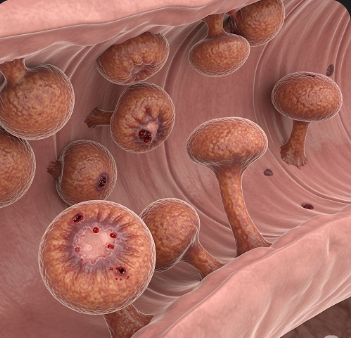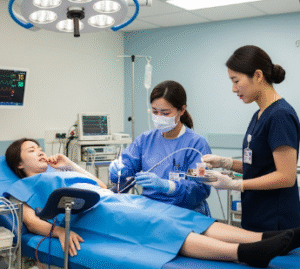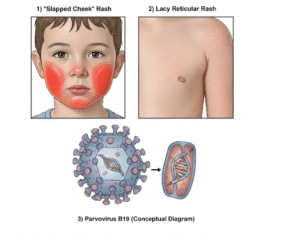Overview
Cancerous polyps are abnormal growths in the lining of organs such as the colon, rectum, stomach, or other parts of the digestive tract, where cells have begun to show precancerous or malignant changes. While many polyps are benign, certain types can progress into cancer over time, making early detection and removal crucial.
In South Korea, gastroenterology and oncology clinics offer screening, minimally invasive polyp removal, and follow-up care to prevent progression to cancer, providing both advanced diagnostics and treatment options.
Key Facts
Highlights:
➡️ Cancerous polyps are often asymptomatic, especially in early stages.
➡️ Colon and rectal polyps are the most common, and some can develop into colorectal cancer.
➡️ Risk factors include age over 50, family history, lifestyle factors, and certain genetic conditions.
➡️ Screening via colonoscopy or endoscopy is the most effective method to detect and remove polyps.
➡️ South Korea offers state-of-the-art endoscopic technology for safe, effective polyp evaluation and removal.
What are Cancerous Polyps?
Cancerous polyps are abnormal tissue growths with the potential to become malignant.
Key characteristics:
- Size: Can range from a few millimeters to several centimeters
- Shape: Sessile (flat) or pedunculated (on a stalk)
- Location: Commonly in the colon and rectum, but also stomach or small intestine
- Cellular Changes: Dysplasia or early malignant transformation may occur
- Detection: Often found during routine colonoscopy, endoscopy, or imaging
- Clinical Significance: Early detection allows removal before progression to cancer, significantly improving outcomes
What Symptoms are Related to Cancerous Polyps?
Many cancerous polyps do not cause symptoms until they grow larger. When symptoms occur, they may include:
- Rectal bleeding or blood in stool
- Changes in bowel habits, such as diarrhea or constipation
- Abdominal pain or cramping
- Unexplained weight loss
- Fatigue or anemia due to chronic blood loss
- Mucus discharge from the rectum
Highlights:
➡️ Asymptomatic polyps are often detected during screening, highlighting the importance of routine check-ups.
➡️ Symptomatic polyps may indicate larger or more advanced lesions, requiring urgent evaluation.
What Causes / Possible Causes of Cancerous Polyps?
Highlights:
➡️ Age: Polyps are more common in individuals over 50.
➡️ Genetic Factors: Conditions like Familial Adenomatous Polyposis (FAP) or Lynch syndrome increase risk.
➡️ Lifestyle Factors: Poor diet, sedentary lifestyle, obesity, smoking, and alcohol use.
➡️ Chronic Inflammation: Inflammatory bowel disease (Crohn’s disease or ulcerative colitis) can predispose to polyps.
➡️ Previous Polyps: History of polyps increases the likelihood of recurrence.
➡️ Mechanism: Polyps form due to abnormal cell growth in the mucosal lining, and over time, genetic mutations can trigger malignant transformation.
When Should I See My Doctor?
Highlights:
➡️ If you notice rectal bleeding or blood in stool.
➡️ If there are persistent changes in bowel habits or unexplained abdominal discomfort.
➡️ If you have a family history of colorectal cancer or polyps.
➡️ Routine screening is recommended for adults over 50, or earlier for high-risk individuals.
➡️ Early consultation allows timely polyp detection and removal, preventing progression to colorectal cancer.
Care and Treatment
Management of cancerous polyps focuses on removal and prevention of malignancy:
Highlights:
➡️ Endoscopic Polyp Removal (Polypectomy): Most polyps can be removed safely during colonoscopy or endoscopy.
➡️ Surgical Resection: Required for larger or malignant polyps that cannot be removed endoscopically.
➡️ Follow-up Monitoring: Regular colonoscopy or endoscopy to detect new polyps and monitor recurrence.
➡️ Lifestyle and Dietary Measures: High-fiber diet, reduced red meat, maintaining healthy weight, exercise, and avoiding smoking/alcohol.
➡️ Medical Therapy: In select high-risk patients, medications like aspirin or NSAIDs may be used under supervision to reduce polyp formation.
➡️ Patient Education: Understanding polyp types, screening schedules, and warning signs for early intervention.
Treatment Options in Korea
South Korea provides advanced care for patients with cancerous polyps:
Highlights:
➡️ Gastroenterology Clinics: Screening colonoscopy, polyp detection, and removal.
➡️ Endoscopic Centers: Minimally invasive procedures with high precision and safety.
➡️ Surgical Expertise: Laparoscopic or open surgery for large or malignant polyps.
➡️ Oncology Collaboration: Multidisciplinary teams for malignant or high-risk lesions.
➡️ Advanced Imaging: High-definition endoscopy, chromoendoscopy, and CT colonography for precise evaluation.
➡️ Follow-up and Preventive Programs: Scheduled monitoring for high-risk patients and lifestyle counseling.
➡️ Medical Tourism Support: Multilingual consultation, endoscopic treatment, and post-procedure follow-up for international patients.













